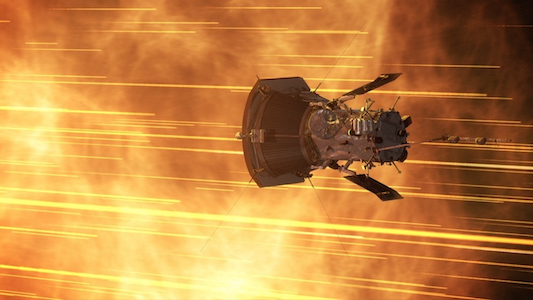 |
|
Astrophysical and Planetary Sciences Colloquium
Monday, September 19, 2022 at 12:15-1:15PM JILA Auditorium David Malaspina, "Dispatches from the Sun: Physics of our Nearest Star Determined by the Parker Solar Probe Mission"  Abstract:The Parker Solar Probe spacecraft has traveled closer to the Sun than any other human-made object. It has measured in-situ magnetic fields, electric fields, thermal plasma, high energy particles, and interplanetary dust in the near-Sun solar wind. Most recently, it made the first in-situ measurements of the solar corona, dipping below the Alfven surface. These measurements are used to target fundamental solar physics questions applicable to stellar physics, such as: What processes heat a star's corona? How is a stellar wind accelerated and heated? How do processes in and near the corona accelerate energetic particles? How do the properties of a star determine the evolution of its nearby dust environment? Parker Solar Probe launched in 2018, with 24 orbits of the Sun planned. As of September 2022, 13 of those orbits are complete, and the spacecraft has traveled as close as 12.2 solar radii (~0.06 AU) from the photosphere. With the first half of the prime mission complete, analysis of mission data is producing great strides in our understanding of the inner heliosphere. This talk highlights key advances made by University of Colorado undergraduate students, graduate students, postdocs, and researchers regarding: the plasma wave environment near the Sun, connections between solar surface features and solar wind structures, solar wind acceleration mechanisms, and solar-driven evolution of the interplanetary dust cloud. Over the next 3 years (11 orbits), the spacecraft will explore never- before sampled regions of the inner heliosphere, reaching as close as 8.8 solar radii (~0.04 AU) from the photosphere, and enabling new breakthrough discoveries. Finally, this talk describes how the portion of Parker Solar Probe FIELDS instrument built by the University of Colorado has given rise to a family of new space-borne in-situ instruments poised to explore Earth's ionosphere/thermosphere interface, the Earth's inner magnetosphere, the lunar surface, and possibly interstellar space.
|